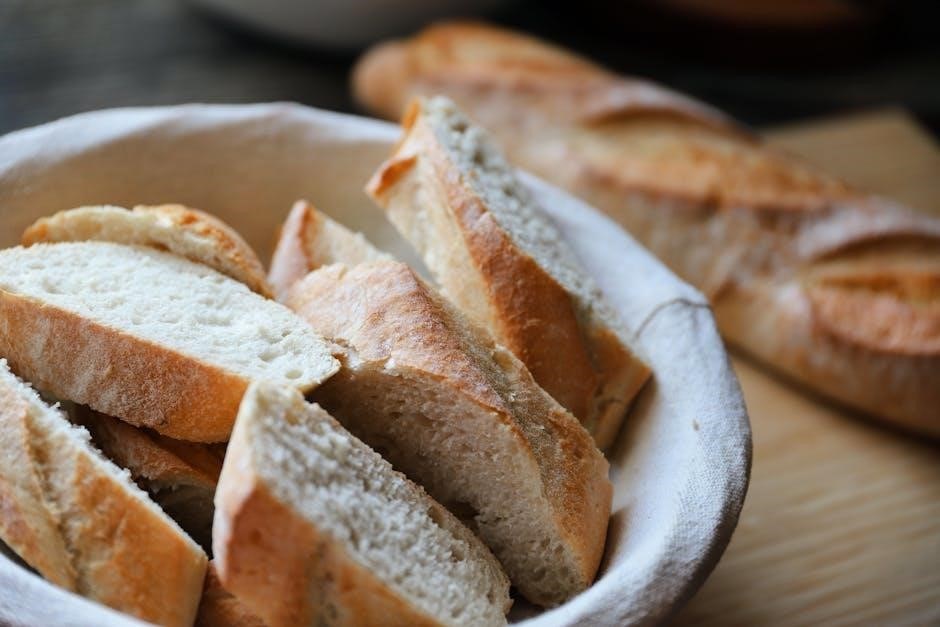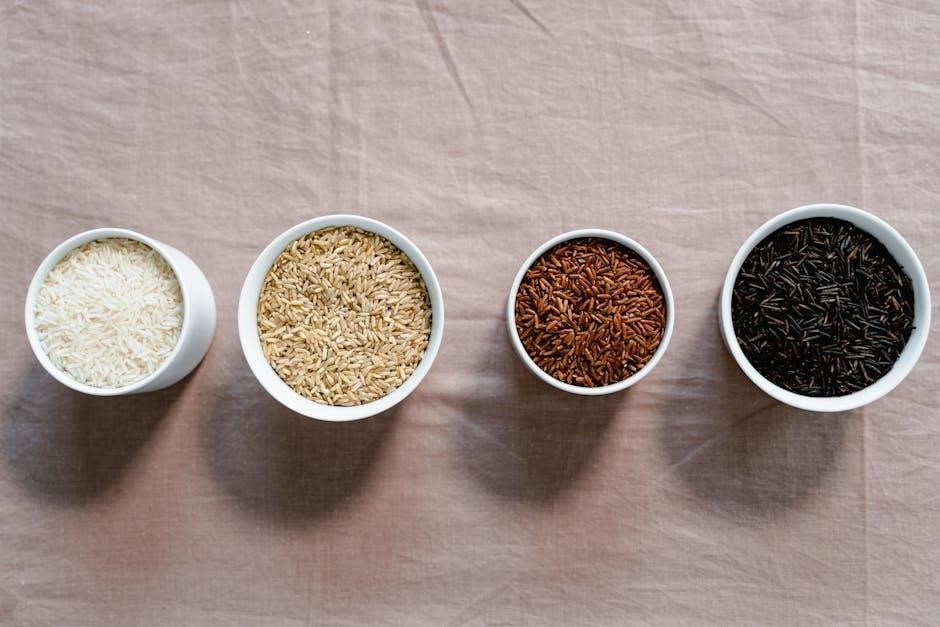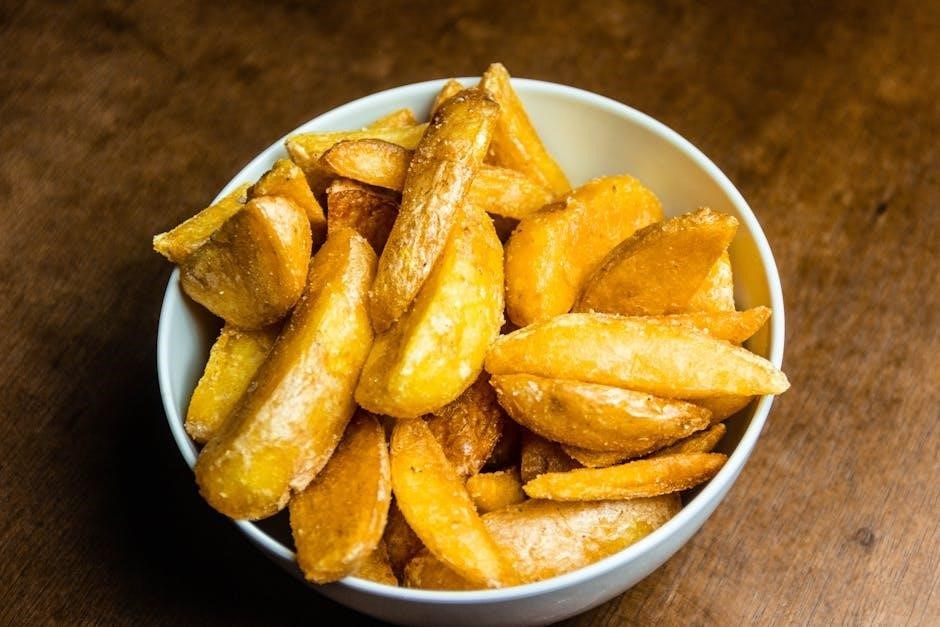Resistant starch is a unique type of dietary fiber that resists digestion in the small intestine, offering significant health benefits. It ferments in the colon, promoting gut health and improving overall well-being.
What is Resistant Starch?
Resistant starch is a type of dietary fiber that resists digestion in the small intestine and ferments in the large intestine. It acts like a prebiotic, feeding beneficial gut bacteria, which improves gut health and supports immune function. There are four types of resistant starch, each with unique properties and sources. It is naturally found in certain foods, such as whole grains, legumes, and unripe fruits, or can be created through cooking and cooling processes. Resistant starch helps regulate blood sugar levels, enhances nutrient absorption, and may contribute to weight management by increasing feelings of fullness. Its ability to bypass digestion makes it a valuable component of a healthy diet, supporting overall metabolic and digestive well-being.
Benefits of Resistant Starch for Health
Resistant starch offers numerous health benefits, primarily due to its prebiotic properties. It promotes gut health by feeding beneficial bacteria, improving digestion, and boosting the immune system. Studies show it helps regulate blood sugar levels, enhancing insulin sensitivity and reducing the risk of type 2 diabetes. Additionally, resistant starch aids in weight management by increasing satiety and reducing calorie intake. It also supports healthy cholesterol levels and may improve mental health by influencing the gut-brain axis. Incorporating resistant starch-rich foods into the diet can lead to better overall well-being, making it a valuable addition to a healthy lifestyle. Its unique properties make it a key component for maintaining a balanced and nutritious diet.

Understanding Resistant Starch Types
Resistant starch is classified into four types based on its structure and resistance to digestion. These types differ in their sources and formation processes.
RS1: Physically Inaccessible Starch
RS1 refers to starch that remains undigested due to its physical inaccessibility. It is typically found in whole grains, seeds, and legumes. The intact cell walls or seed coats protect the starch from enzymes, preventing breakdown in the small intestine. This type of resistant starch is naturally occurring and relies on the food’s structure to resist digestion. RS1 is particularly beneficial for gut health, as it ferments in the large intestine, producing short-chain fatty acids that support beneficial bacteria. Foods like whole wheat, barley, oats, and various legumes are excellent sources of RS1. Incorporating these into your diet can enhance digestive health and overall well-being.
RS2: Uncooked or Raw Starch
RS2 is uncooked or raw starch that remains resistant to digestion; Found in foods like raw potatoes, green bananas, and unripe fruits, it avoids enzymatic breakdown due to its unprocessed state. Cooking typically breaks down this starch, making it digestible. RS2 is rich in prebiotic fiber, aiding gut bacteria and boosting immune function. It also helps regulate blood sugar levels by slowing glucose absorption. Incorporating raw or uncooked RS2-rich foods into meals can support a balanced diet and improve overall health. Regular consumption is linked to enhanced metabolic function and better nutrient absorption.
RS3: Retrograded Starch
RS3 is retrograded starch, formed when cooked starchy foods are cooled, allowing the starch to recrystallize. This process makes it resistant to digestion. Common sources include cooled potatoes, rice, and pasta. RS3 benefits gut health by acting as a prebiotic, fostering beneficial bacteria growth. It also helps stabilize blood sugar levels and enhances insulin sensitivity. Incorporating cooled or reheated starchy foods into meals can boost dietary fiber intake. RS3 is particularly useful for those managing diabetes or seeking to improve metabolic health. Its unique formation process makes it a valuable component of a balanced diet, supporting both digestive and overall well-being. Regular consumption can contribute to better nutrient absorption and a healthier gut microbiome.
RS4: Chemically Modified Starch
RS4 is a type of resistant starch created through chemical modifications, enhancing its resistance to digestion. It is commonly used in processed foods to increase fiber content and improve texture. RS4 is not naturally occurring and is typically produced in laboratories for commercial use. It provides similar health benefits to other resistant starch types, such as promoting gut health and aiding in blood sugar regulation. RS4 can be found in some fortified cereals, bread, and snacks. Its chemical structure makes it highly stable, allowing it to withstand various food processing conditions. This form of resistant starch is particularly beneficial for individuals looking to enhance their diet’s nutritional profile through convenience foods. It is also widely used in the food industry due to its versatility and effectiveness.

Resistant Starch Foods List
Resistant starch is abundant in whole grains, legumes, and certain fruits and vegetables. Common sources include oats, barley, beans, bananas, and potatoes. These foods naturally boost fiber intake.
Whole Grains High in Resistant Starch
Whole grains are excellent sources of resistant starch, particularly oats, barley, and rye. Oats contain a significant amount of RS, especially when consumed as oatmeal or rolled oats. Barley, both pearled and whole, is another rich source, often used in soups and stews. Rye bread and rye berries also contribute to a good intake of resistant starch. These grains not only provide dietary fiber but also support gut health by promoting beneficial bacteria growth. Incorporating whole grains into meals can enhance digestion and overall nutritional balance, making them a great addition to a healthy diet.
Legumes andBeans Rich in Resistant Starch

Legumes and Beans Rich in Resistant Starch
Legumes and beans are among the richest sources of resistant starch, making them a vital component of a healthy diet. Kidney beans, black beans, and pinto beans are particularly high in RS, especially when cooked and then cooled. Lentils and chickpeas also contain significant amounts. These legumes not only provide fiber but also support gut health by fostering a diverse gut microbiome. Incorporating them into meals can improve digestion and contribute to better blood sugar management. Legumes are versatile and can be added to soups, salads, and main dishes, enhancing both nutrition and flavor. They are a cornerstone of diets aimed at promoting long-term health benefits.
Vegetables with High Resistant Starch Content
Certain vegetables are excellent sources of resistant starch, particularly when prepared in specific ways. Potatoes, especially when cooked and cooled, contain significant amounts of RS. Corn, both fresh and dried, is another high source, particularly in forms like cornmeal or tortillas. Green bananas also contribute to resistant starch intake, as they contain unripe starches that the body cannot fully digest. Other vegetables like oats and barley, while technically grains, are often categorized similarly due to their high RS content. These vegetables play a crucial role in improving gut health and blood sugar regulation, making them a valuable addition to a balanced diet.
Fruits That Contain Resistant Starch
Certain fruits are rich in resistant starch, particularly those that are unripe or have a higher starch content. Bananas, for instance, contain significant amounts of resistant starch, especially when they are green and unripe. As bananas ripen, the starch converts to sugar, reducing the resistant starch content. Other fruits like plantains, which are similar to bananas, also provide resistant starch, particularly in their raw, uncooked form. Tropical fruits such as durian and jackfruit also contain resistant starch, although in smaller amounts. Incorporating these fruits into the diet can help promote gut health, improve blood sugar regulation, and enhance overall nutrition.
Other Sources of Resistant Starch
Besides whole grains, legumes, vegetables, and fruits, resistant starch can also be found in various processed foods and specific starches. Certain types of bread, such as sourdough, and pasta products are sometimes formulated to retain higher levels of resistant starch. Additionally, uncooked or raw starches like tapioca and cornstarch can act as sources of resistant starch when consumed uncooked or after cooling. Some commercially available resistant starch supplements are derived from potatoes or maize, offering a concentrated way to boost intake. These sources provide flexibility for individuals looking to incorporate resistant starch into their diets, especially when access to whole, unprocessed foods is limited.
Resistant starch offers numerous health benefits, improving gut health and blood sugar levels. Incorporate it into your diet through whole foods or supplements for better well-being. Refer to the USDA’s comprehensive guide for detailed food lists and scientific research supporting its benefits.
Key Takeaways
Resistant starch is a beneficial dietary component that improves gut health, blood sugar regulation, and satiety. It is found in whole grains, legumes, vegetables, and some fruits. Incorporating resistant starch-rich foods into meals can enhance overall nutrition and support long-term health benefits. Consulting resources like the USDA’s guide provides detailed food lists and scientific support for its advantages.

Recommended Reading and Resources
For further understanding, the USDA’s Food and Nutrition Service provides detailed guides on resistant starch-rich foods, emphasizing their role in healthy dietary patterns. Scientific journals and nutrition websites like Healthline offer comprehensive lists and benefits of resistant starch. The National Institute of Nutrition also publishes studies on its impact on gut health and weight management. Reputable sources like the Academy of Nutrition and Dietetics provide practical tips for incorporating resistant starch into daily meals. These resources are essential for anyone seeking to enhance their diet with resistant starch-rich foods. Accessing updated research and guidelines ensures informed decisions for optimal health benefits.